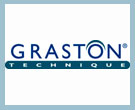Tens of millions of Americans suffer from chronic pain. The condition can be mild or excruciating, episodic or continuous, merely inconvenient or totally incapacitating. Chronic pain affects people of any age, but is most commonly associated with middle-aged to older adults. Often referred to as the “terrible triad,” chronic pain commonly produces suffering, sleeplessness and sadness—a cycle that is extremely debilitating for both the sufferer and his or her family. Anxiety, stress, depression, anger and fatigue interact in complex ways with chronic pain and may decrease the body’s production of natural painkillers.
How Does Chronic Pain Develop?
The causes of chronic pain are exceedingly diverse. Conditions accompanying aging may affect bones and joints in ways that cause chronic pain. Diseases such as cancer, AIDS, multiple sclerosis, stomach ulcers, gallbladder disease, and arthritis can also be underlying causes of chronic pain. In some cases, generalized muscle and nerve pain can develop into chronic pain. In other cases, injury can lead to chronic pain, or patients can experience chronic pain without any obvious physical cause.
However, we find that the majority of people suffering from chronic pain experience this pain because of ligament weakness from degenerative diseases like osteoarthritis, injury, or repetitive use damage. In compensating for the ligament weakness, other areas of the body, including tendons and muscles, can be afflicted with referred pain.
What are the Symptoms of Chronic Pain?
Any pain that lasts longer than six months is defined as chronic. Some common forms of chronic pain include continuous muscle pain accompanied by cramping, soreness, swelling and muscle spasms; headache pain, ranging from mild pain to excruciating migraines; enduring joint pain; and lingering back pain, which may be sharp or aching. Weakness, numbness, tingling, sleeping difficulties, lack of energy and depression often accompany chronic pain.
Conventional medical treatments may help relieve the symptoms of chronic pain but they do not address the root of the problem. By strengthening structural weaknesses in the body, as natural treatments like Chiropractic and nutritional supplements do, chronic pain may be alleviated permanently.
Natural vs. Modern Medicine’s Approach to Chronic Pain
Modern Medicine’s Approach to Chronic Pain
Modern medicine continues to search for drugs, devices, and surgical procedures to eliminate chronic pain. Anti-inflammatory drugs have become a billion dollar business. While the drugs may provide temporary relief, they do nothing to correct the underlying condition causing the pain. In fact, in the end, these medications do more damage than good.
Another common pain treatment is a cortisone shot. It is also one of the quickest ways to lose strength at the ligament-bone (fibro-osseous) junction. Cortisone and other steroid shots have adverse affects on bone, cartilage, and soft tissue healing. Unfortunately, many people suffering from chronic pain look for quick relief without thinking about the long-term, potentially harmful side effects that could occur. The problem with cortisone is that, although immediate pain relief is possible, it inhibits nearly every aspect of healing, making the pain condition even worse!
In simple terms, anti-inflammatory drugs and cortisone shots are anti-healing. They result in long-term loss of function and pain that is even more chronic by actually inhibiting the healing process of soft tissues and accelerating cartilage degeneration. In addition, long-term use of these drugs can lead to other sources of chronic pain, allergies, leaky gut syndrome, and other serious side effects.
Finally, when all else fails, patients who experience chronic pain, particularly joint and back pain, are referred to a surgeon. Unfortunately, surgery usually makes the problem even worse. Surgeons will use x-ray technology as a diagnostic tool, which does not always properly diagnose the pain source. In addition, decisions to remove cartilage tissue, bone or a disc will most commonly result in arthritis. Therefore, the treatment of one pain condition simply leads to another.
The Natural Approach to Chronic Pain
A better approach to alleviating chronic pain (forever!) is to stimulate soft tissue, ligament, and cartilage repair with Chiropractic adjustments. Most people have chronic pain because of ligament weakness and cartilage deterioration.
Here is What Happens
- A ligament is damaged through overuse or trauma, such as a sports injury or an accident.
- Because of the ligament’s poor blood supply, it does not heal (unlike muscles, which have a good blood supply and heal quite easily).
- Over time, the injured ligament weakens, like a stretched rubber band that has lost its elasticity.
- Since ligaments function as joint stabilizers, the injured ligament is no longer capable of doing its job.
- As a result, the muscles must compensate. They begin to ache and spasm and, eventually, the joint or vertebra in the area begins to compensate as well.
- Overgrowth of bone occurs to help stabilize the injured ligament, which leads to arthritis, and a whole new level of pain and disability.
This downward spiral of pain can be halted and reversed only by stimulating healing at the source—the ligament.
Chiropractic is a safe and natural approach in the treatment of repairing tendon, ligament and cartilage damage. Chiropractic stimulates the body’s ability to heal itself, repairing painful areas.
If you are interested in more information about natural treatments or to schedule an appointment, please contact Dr. Laboret at 972-671-5263.
Disclaimer: The preceding is to provide information about relief and the benefits that may be derived. It is not intended to claim a cure for any disease or condition. It should not take the place of your doctor’s advice or treatment.






